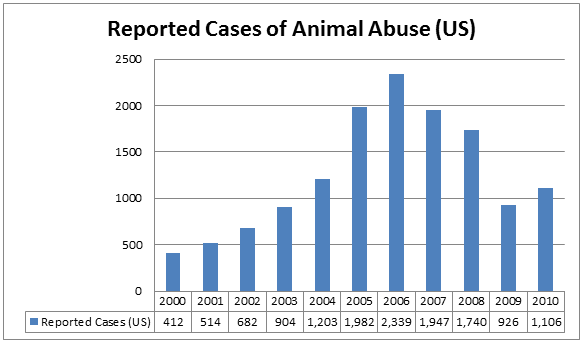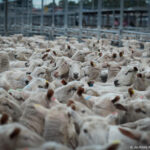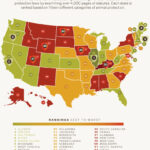Animal cruelty remains a pervasive blight on society, with myriad cases documented each year. The years 2015, 2016, and 2017 witnessed an unsettling number of reported incidents, revealing trends that speak to both the resilience of the issue and the complexities surrounding it. Understanding these yearly statistics is imperative, as they may elucidate underlying factors that contribute to the prevalence of animal mistreatment.
In 2015, preliminary statistics indicated a significant uptick in reported cases of animal cruelty. This rise can be attributed to several factors, including increased public awareness and advocacy efforts that encouraged individuals to report incidents more frequently. Figures suggest that over 17,000 cases were logged, a substantial increase compared to previous years. This marked escalation was indicative of an evolving societal consciousness regarding, not just domestic animals, but also wildlife, as people began to recognize the moral imperative of protecting all living beings.
Transitioning to 2016, the narrative surrounding animal cruelty continued to evolve. The number of reported cases surged even higher, with estimates reaching around 19,000. This increase suggests a dual phenomenon; while it conveys that more instances of cruelty were occurring, it also highlights a growing societal aversion towards such behavior. Educational campaigns, coupled with a heightened presence of social media platforms, allowed for the swift dissemination of information regarding animal rights. Consequently, the public became more engaged, and instances of reported cruelty began to reflect this newfound vigilance.
Throughout 2017, the grim statistics maintained their upward trajectory, peaking at approximately 21,000 reported cases of animal mistreatment. This unsettling persistence hints at deeper societal issues rather than mere cases of isolated abuse. Questions arise: Why does cruelty persist despite awareness and legislation designed to protect animals? The stark reality is that systemic problems, such as poverty, mental health issues, and societal desensitization to violence, play a crucial role in perpetuating this cycle of mistreatment.
The phenomenon of desensitization is particularly troubling. In a world bombarded by images and narratives that normalize violence, the emotional response to distressing situations may dull over time. As society grapples with its own collective traumas, the suffering of animals may become just one more statistic, one more cry drowned out in the cacophony of human existence. As reported cases gather in numbers, one must consider the harsh reality that behind these statistics lie stories of unimaginable suffering.
Moreover, the increase in reported cases does not inherently imply an increase in actual occurrences of cruelty. It may instead reflect improved reporting mechanisms and an overall societal shift towards intolerance of animal abuse. For instance, various animal protection organizations have made it easier for the public to report suspected cruelty, effectively removing bureaucratic barriers that previously stymied action. This interplay between awareness and systemic response underscores the moral duty to monitor and address animal suffering actively.
As the years progressed from 2015 to 2017, patterns of cruelty took on diverse forms, often exacerbated by socio-economic conditions and psychological factors. Cases of neglect, for instance, became distressingly common. Families facing dire economic hardships may neglect their pets due to the inability to afford adequate food or veterinary care. In other cases, mental health struggles can lead individuals to inflict harm, often subconsciously, upon animals as a projection of their internal turmoil. Understanding these complexities requires not just sympathy, but also strategic intervention, aiming to mitigate cruelty by addressing the forefront conditions contributing to such actions.
Legal frameworks aimed at combating animal cruelty varied significantly across jurisdictions during these years. Some regions enhanced their laws, introducing harsher penalties and promoting education on pet care and responsible ownership. In contrast, other areas lagged behind, leaving loopholes that could be exploited and perpetuating a culture of impunity. This disparity highlights the necessity for advocacy groups to push for comprehensive reforms, aiming to standardize the humane treatment of animals on a national scale.
While reflecting on the statistics from 2015 to 2017, it becomes evident that the issue of animal cruelty transcends the mere numbers. Each reported case encapsulates a story—a story often intertwined with systemic societal challenges. Addressing animal mistreatment necessitates a collective awakening to the broader societal implications at play. Engaging communities in discussions about empathy, responsibility, and societal values surrounding animals is crucial in refining our collective approach to advocacy.
Ultimately, the years 2015, 2016, and 2017 served as a crucial focal point in the ongoing battle against animal cruelty. The alarming increases in reported cases present both a call to action and a sobering reminder of the continuous effort required to champion the rights and well-being of all creatures. The trends observed over these years compel reflection on personal and collective responsibilities towards animals—whether domestic, farmed, or wild. It is imperative that society does not become complacent, for the visible rise in awareness should translate into tangible action. Only then can we aspire to eradicate cruelty and foster a humane world for all living beings.








